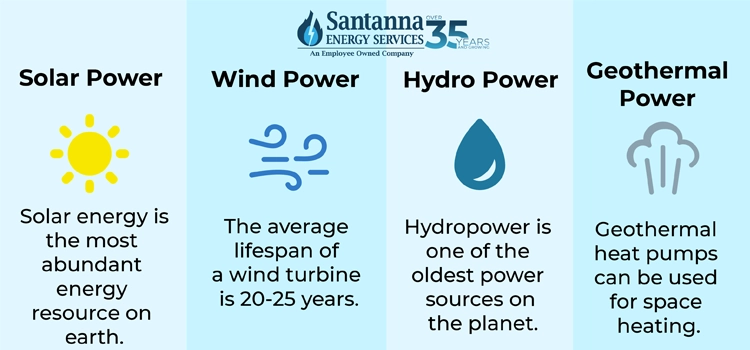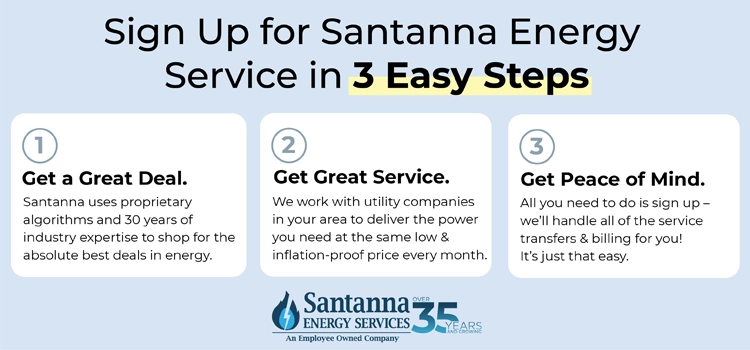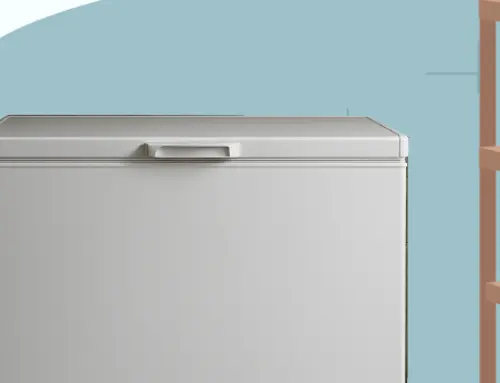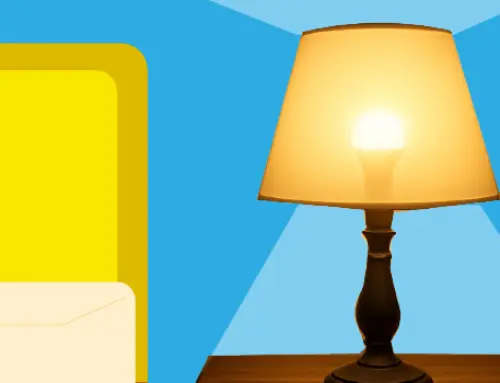F.A.Qs About Your Natural Gas and Electricity Plan Answered
by Tyler Castle
11.7 min read

Are you tired of feeling stuck with high energy bills and limited choices? If you’re feeling overwhelmed or confused about the process of looking for a new plan, don’t worry – you’re not alone. Looking for your next energy plan can seem like a daunting task, but with the right information and guidance, it can be a smooth and beneficial experience. So, sit back, relax, and let us answer all the frequently asked questions you might have about your energy plan and your energy options.
Understanding energy plans and how your energy gets to your home
By having a better understanding of the different types of energy plans available and how they are delivered, you can make an informed decision for your energy choice. With rising energy costs, it’s important to understand your energy options to ensure you’re getting the best plan for your needs and lifestyle. Here are the most frequently asked questions about your energy plan and how energy gets to your home, answered:
How does an energy plan work?
At its core, an energy plan works by signing up for a contract between you and an energy provider. This contract should outline the terms of your energy supply. It includes details such as the rate you will pay for electricity or natural gas for your home, the length of the contract, and any special features or incentives.
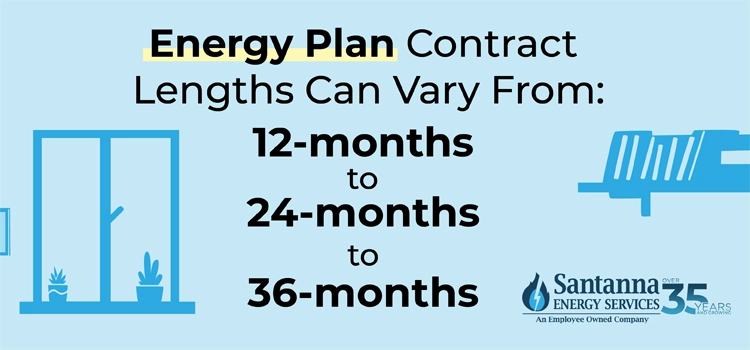
Once you choose a plan and sign up with a provider, no matter the supplier or plan, the utility company will always deliver the energy to your home. The energy for your home comes from a complex system of power plants, transmission lines, and distribution networks that work together to ensure that your lights turn on and your appliances run smoothly. This can vary depending on if your needs are electrical or natural gas-centered or if you opt for eco-friendly energy.
How does my natural gas and electricity get to my home?
Your electricity gets to your home through a series of steps that involve multiple players in the energy industry. First, power plants generate electricity using various sources such as coal, natural gas, or renewable sources like wind or solar. This electricity is then sent at high voltages through transmission lines to substations where it is converted into lower voltages for distribution. From there, it travels through distribution lines to transformers near your home, which then deliver the electricity to your meter.
If you’re moving into a new home and want to find out what electricity company you are with, simply contact your city’s utility department to see what your options are for electricity providers. In the same way, you can look at the top of your electricity bill and that should tell you who your provider is.
The process for how natural gas gets to your home is similar to how electricity gets to your home but instead of power plants, it comes from large pipelines that transport the gas to a local utility company. Then this gas flows through smaller pipelines called “mains” which flow to smaller service lines that go directly to homes or buildings. You might be asking yourself, “who is my natural gas provider,” and you can find this information the same way if you’re looking for your electricity provider. Simply contact your city’s utility department to see what your options are for natural gas providers or look at the top of your energy bill.
Exploring your options for switching your energy plan
Knowing your energy options as you consider switching energy plan is crucial because it allows you to make a more informed decision about your energy supply needs and goals. With various types of plans and providers available, understanding what each plan and provider offers and how it aligns with your energy goals can help you budget based on your rate or plan type. It’s also important to keep in mind whether you live in a deregulated or regulated energy market as this can impact your options for energy plans. Here are the most common questions answered about your energy plan options:
What are my natural gas and electricity plan options?
When it comes to choosing a natural gas plan or electricity plan you have many options to choose from. As mentioned before, depending on where you live, your energy options can be limited depending on if you live in a regulated or deregulated area. As a brief overview, in regulated markets, the government or a similar organization has complete oversight and control of providing goods and services. In a regulated electricity market, the public utility company owns and operates all electricity, from the generation to the meter, selling power directly to the customers. This distinction adds a layer of consideration to your decision-making process.
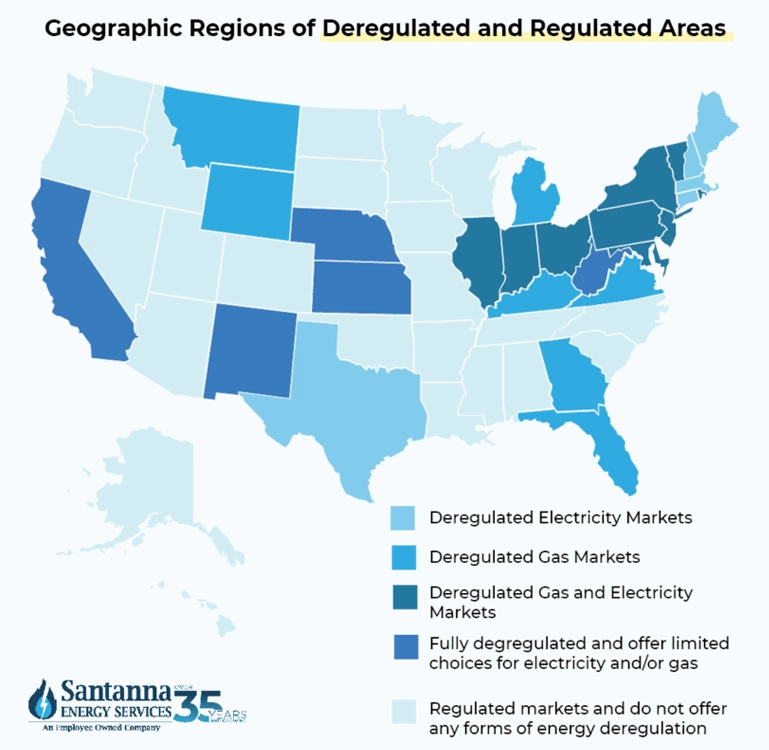
In terms of what rates you can get when choosing an energy plan for your home, this is where it might get complicated. In the energy industry, electricity rates and natural gas rates are always fluctuating due to supply and demand impacts and even weather. Even though these rates do shift, you can customize the way you pay for your energy plan! Here are the most common ways:
| Aspect | Variable-Rate Energy Plans | Fixed-Rate Energy Plans | “Flat” or Unlimited Energy Plans |
|---|---|---|---|
| Pricing Structure | Rates fluctuate based on market conditions | Locked-in rate remains constant for the contract duration | Set monthly fee, irrespective of usage but there can be a fluctuating supply cost * |
| Predictability | Unpredictable monthly bills | Stable, predictable monthly bills | Consistent, predictable monthly bills |
| Flexibility | Can benefit from market lows but risk higher costs during peaks | Offers stability but may miss out on market lows | Stable cost regardless of market fluctuations |
| Budgeting | Challenging for budgeting due to variable costs | Easier budgeting with fixed monthly costs | Easier budgeting with fixed monthly costs |
| Contract Terms | Often month-to-month or short-term contracts | Typically fixed-term contracts | Often available with both short-term and long-term options |
| Consumer Preference | Suitable for those comfortable with market fluctuations | Ideal for those seeking price stability | Great for those who have a consistently high energy consumption* |
While this chart might not cover all plan options some energy providers have available, these are the most common. Most energy providers offer Fixed-Rate, Variable-Rate and Unlimited Energy options for both your natural gas and electricity needs. To learn more about the pros and cons of a Fixed-Rate energy plan, a Variable-Rate energy plan, and a Flat-Rate energy plan, visit our article here!
Do I have the option for renewable energy solutions for my natural gas and electricity plan?
With the increasing awareness of environmental responsibility, many energy providers are offering renewable energy solutions for natural gas and electricity plans. By choosing a renewable energy plan, you are supporting the use of sustainable energy solutions that harness energy solutions such as wind or solar power. Not only does this help reduce your carbon footprint and support a healthier planet, but it also promotes growth for an eco-friendly future. The following include renewable energy resources:
In the same way, renewable energy electricity plans provide the opportunity to help keep things carbon neutral or even reduce your carbon footprint. Renewable electricity helps build a more reliable, resilient and diversified energy grid which is essential for a sustainable future.
On the flip side, earth-friendly natural gas plans allows you to enjoy all the benefits of your energy service while helping to create ecological balance in the world. This is done by carbon offsetting: making up for our emissions here by reducing emissions elsewhere. So, simply by heating your home, you can be helping the planet.
Can I switch energy plans when I’m currently under contract?
While it may seem like you are locked into your current energy plan, most plans have an option to terminate the contract early. However, be aware that there may be fees or penalties for doing so. It’s important to carefully read through your current contract and understand any potential consequences before making the decision to switch. But don’t let a contract hold you back from potentially saving money or choosing a more sustainable energy option. If you’re thinking of switching, contact the provider you’d like to switch to, to see how they can help you make the transition.
Practical Considerations: Service Interruptions and Billing Changes
While switching to a new plan may offer better rates or environmental benefits, you also want to make sure that your energy supply will be reliable and not change your lifestyle. It’s also important to understand any potential changes to your billing process, such as the frequency of payments or payment methods accepted. Here are some of the most commonly asked questions about energy plan service interruptions and more:
Is there a service interruption when I switch energy providers?
Switching between energy providers may involve a brief service interruption as the new provider takes over supplying your energy. However, this holds true for provider transitions, not when shifting to a supplier. When switching to a supplier, the utility remains the energy source, avoiding interruptions as they continue providing the actual energy
If you’re looking to make the switch to renewable energy solutions for your home, you may experience some service interruptions if you’re installing solar panels to your roof so be sure to account some time for that.
Does my billing change when I switch energy plans?
When switching energy plans, there may be changes to your billing process, such as the frequency of payments or payment methods accepted. It’s important to carefully consider these potential changes and make sure they align with your budget and preferences. You may also want to inquire about any additional fees or charges associated with switching providers, so you can factor them into your decision-making process. All this can be answered simply by contacting your new potential energy provider BEFORE you sign up to ensure you don’t run into any surprises.
Making the Switch to a New Energy Plan: The Process and Steps
By understanding the necessary steps to switch energy providers, you can avoid any potential issues or delays during the transition. By knowing the process, you can also ensure that all necessary paperwork and payments are handled correctly, preventing any disruptions to your energy supply. So, take the time to research and understand the steps involved in switching to a new energy plan – it will ultimately make the process much easier and more efficient for you. And no need to worry if it’s safe to switch energy providers. It happens all the time and more often than not, the sooner you switch, the sooner you can reap the benefits.
How to switch energy providers
Once you’ve done your research and have selected the perfect energy provider for you, you can make the switch quicker than ever before! Most energy providers allow you to enroll online, and the process differs from provider to provider, but a typical energy plan enrollment process might go something like this:
- Through online enrollment, your potential energy provider will begin by requesting your complete address.
- Once you’ve entered your address, you’ll be provided with an abundance of energy plan choices to choose from. Be sure to select the one that aligns with your needs and lifestyle.
- Next, enter your contact information like your name and email.
- In the following step, you’ll be asked to enter your utility info. One of the most important pieces of information you’ll need for this step is your UAN (Utility Account Number). This will help locate your current plan.
- After you’ve provided your information, the last thing you need to do is confirm your order. After that, you’ll be contacted by your provider to begin your transition.
This might sound overwhelming, but some energy providers make this process even simpler!
Will I need to contact my current energy provider to cancel my existing plan?
Whether you will need to contact your current energy provider or cancel your existing plan on your own typically depends on the terms and conditions of your current contract. While some providers may require a formal notice, others may have a straightforward process in place. Most energy providers that you switch to will contact your current provider on your behalf to initiate the transition and take care of billing and everything in between from there.
What Factors Should I Consider When Choosing an Energy Plan?
Selecting the right energy plan involves careful consideration of various factors tailored to your specific needs and lifestyle. Here are 5 things you should consider when choosing an energy plan:
- Does your energy plan align with your monthly budget?
- Does your energy plan align with your lifestyle?
- Is my energy plan available in my area?
- Does my energy plan require any additional equipment to set up?
While switching energy plans may seem daunting, it can ultimately lead to cost savings and a more sustainable future. By considering potential service interruptions and billing changes, understanding the process of switching providers, and carefully planning your switch, you can make a smooth transition to a new energy plan. Don’t let a contract hold you back from exploring better options – with the right information and approach, you can find an energy plan that aligns with your needs and values.
Santanna Energy Services is a supplier of renewable energy solutions in the United States, providing services to Illinois, Indiana, Pennsylvania, Michigan, and Ohio. We provide a wide range of energy services and products to meet the needs of both residential and small business customers. Our mission is to provide innovative and cost-effective energy solutions that will help our customers achieve their energy goals. With over 35 years of experience, we are committed to creating life-long relationships by providing quality service to customers, communities, and employees.
Tyler is an experienced energy professional, having worked for Santanna Energy Services, for the past four years. He is passionate about renewable energy and believes that diversifying the energy grid is the key to a sustainable future. Tyler is dedicated to supplying consumers with the best possible energy solutions and works diligently to make sure that Santanna can deliver the highest quality service.


